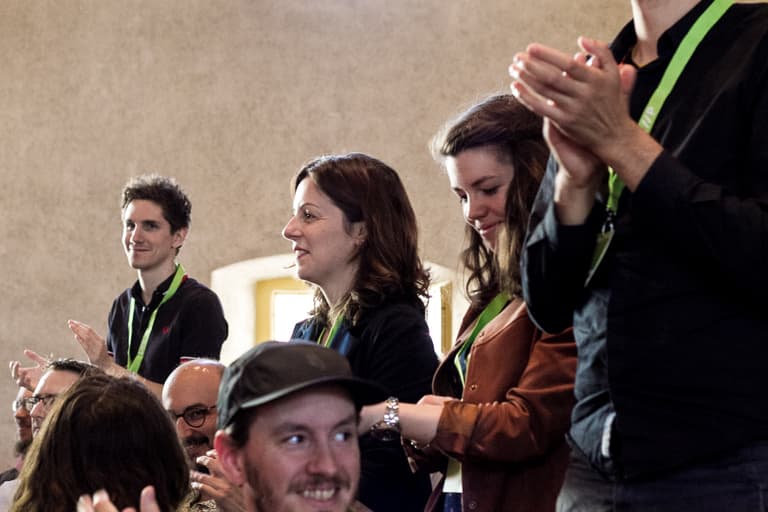Why a Scrum Product Owner certification ?
The first step, I would say, to get certified is to be ready to dedicate time for the preparation and training, and to commit to it. This wasn’t a problem for me as I was highly motivated in improving my skills and knowledge about Scrum. And here is why.
I worked more than 10 years in international corporations, using traditional models for product development. And I reached the point where I sensed that something wasn’t quite right.
As part of the product development team, we were asked to deliver a set of features based on specifications defined at the beginning of a project. All the specifications had to be delivered for a mid- to long term deadline. No need to say that it wasn’t possible to modify them. The sign off could only be possible if the defined specifications were delivered. I often experienced a big rush at the end of the project because nor the scope nor the deadline could be changed. The team members suffered, almost burning out sometimes.
During the latest projects I was working on, feedback from end-users was given during the testing phase. It was already too late though. End-users requested features that were not part of the specifications defined at first. As the project team, we were told that: “end-users can make an enhancement request later on, after the Go-live”. Like my former colleagues, I had this sad feeling. We worked really hard on delivering these features. But we weren’t proud of them as end-users were complaining.
There has to be something better. A way where users needs are at the core of the product. A way where inputs from the team members really count. That’s when I came across the Scrum Guide. It became clear to me that I wanted to be part of this. That I wanted to be part of a Scrum team.
Referring to my experience and skills, Product Owner was the role appealing to me. In order to do so, I set myself two objectives: gaining experience and getting certified.
Collaboration with Liipers
I had the chance to join Liip for a three-months training in POing. Witnessing practical POing and being immersed in the Scrum philosophy was part of the deal. I was on-boarded on different projects too, working with different teams and clients. This helped me integrate how the Scrum Guide should be applied in practice. I got a deeper understanding of the Scrum events, the Scrum artifacts as well as the roles of the Scrum Master, the Product Owner and the development team.
Yes, self-organized teams works ! I was strongly motivated by this environment where all team members are equally responsible for the success or failure of the product. It really makes everyone commit to the work to be done, and brings up new ideas and solutions.
What about the Product Owner ?
This role is the one which always keeps in mind the end-user, not only for the team but also for the client. In my opinion, one of its biggest challenges is to convince the team and the client that real end-users feedback is a must. The PO is the one prioritizing the features to be developed, expressing user stories in the most intuitive manner and identifying the needs of the client and end-users.
I believe that as a Product Owner you need to be empathic, synthetic, a good listener and a good communicator.
During my training, I was inspired and empowered by my fellow PO colleagues. I loved their reactivity and the way they reorganized work to seize each business opportunity. The user needs are evolving and as the Scrum team we have to adapt our developpements to them. The Scrum framework allows us to do so.
Sprint after sprint, I was amazed how the product was developed, refined and improved to perfectly meet the evolving user needs.
Becoming a Product Owner myself was definitely the right choice for me.
Training with Léo – a certified Scrum Master and Agile Coach
At Liip, I had the chance to meet Léo – a Scrum Master and Agile coach. He guided me through the different steps, advising me to several really interesting readings such as Scrum, A Smart Travel Companion by Gunther Verheyen. Thanks to his coaching, I gained a deeper understanding of Scrum’s essence. He challenged me and made me think about Scrum principles and why Scrum has to be fully implemented – not just bits and bites of this amazing framework.
Getting certified, what’s next ?
Beginning of July I felt ready for the Scrum Certification. And I nailed it!
Actually, I applied the Scrum principles to my own training. The vision I have for my product is “to become an efficient Product Owner.” My first iteration was “to understand the role of a Scrum Product Owner”. And the certification was the test. I gave myself three weeks to reach that goal (sprint goal set, sprint duration set, commitment of the team, self-organization). On the other hand, I was open to faillure. As we never fail, but only learn.
This first iteration was a team effort too. I even had a Scrum Master – you know Léo – on my team ;-). I improved my knowledge on my colleagues’ experience (empiricism). My minimum viable product evolved from “to understand the role of a Scrum Product Owner” to “being a certified Product Owner”.
I am proud to announce that my first product works ! And I’m already working on the next improved iteration. So that my (own) product fits the market needs.
I feel fully armed to embrasse a new work life as a Scrum Product Owner. I want to help people – used to work with traditional models – evolving to the use of the Scrum framework.
Last but not least, I will carry on learning and adapting fast. I will be Agile and help others to achieve this goal as well.

